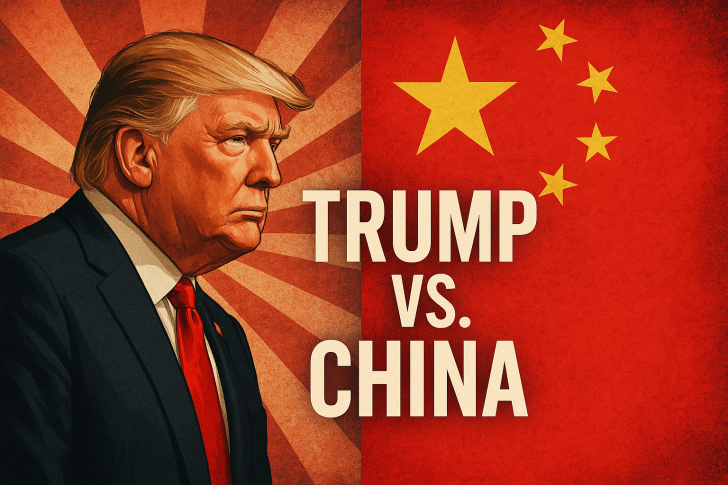A recent viral post suggests President Trump has confirmed 130% tariffs on Chinese imports starting November 1. If this goes through, it would represent one of the most aggressive U.S. trade policies in modern history. Trader Steph is crypto was quick to flag the potential ripple effects across global markets, and investors are already repositioning as uncertainty builds.
Market Impact
- China-exposed stocks: Chinese ADRs like BABA, JD, NIO, PDD, and the FXI ETF are getting hit as traders anticipate weaker exports and possible retaliation from Beijing.
- Currency moves: The yuan (USDCNH) is weakening again—classic behavior when trade tensions flare.
- U.S. sector rotation: Domestic manufacturers and steelmakers like NUE and X could see a boost, while retailers and tech firms relying on Chinese supply chains face tighter margins.
- Inflation concerns: Higher tariffs mean higher import costs, which could complicate the Fed's efforts to bring inflation down.
Technical Picture
The accompanying chart shows clear signs of stress. Price broke sharply below trend support on heavy volume—a textbook risk-off move. It's now testing the 200-day moving average, a level that institutional traders watch closely. If it fails to hold, we could see further downside. The breakdown zone has flipped to resistance, and recent lows now define the next support band.
Winners and Losers
Potential winners:
- On-shoring plays: CAT, DE, HON, EMR
- Steel producers: NUE, X, STLD
- Defense and infrastructure themes
Likely losers:
- China ADRs: BABA, JD, PDD, BIDU, NIO
- Big-box retailers: BBY, TGT, COST
- EV and solar: TSLA, FSLR, ENPH
Looking Ahead
If these 130% tariffs actually land on November 1, markets will need to reprice growth expectations, supply chains, and inflation outlooks. Short-term traders should keep an eye on that 200-day moving average for directional cues. For long-term investors, this is part of a bigger story—structural decoupling between the U.S. and China that will reshape global trade for years to come.
 Saad Ullah
Saad Ullah

 Saad Ullah
Saad Ullah


